A sex toy factory’s research and development of pleasure
EL PAÍS visits Berlin’s Lovehoney, a leading company in an industry whose pandemic-era surge shows no signs of letting up
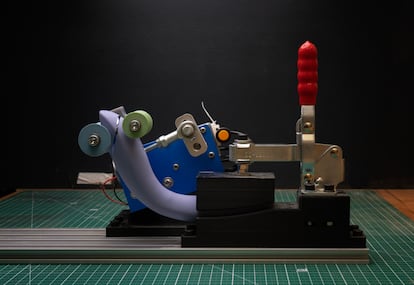
Our plane touches down in Berlin. We’re bound for a visit to the offices of Lovehoney, a leading sex toy manufacturer. In the airport bathrooms, we see a vibrator vending machine alongside those that dispense tampons and condoms. In a neighborhood on the outskirts of the city that we pass through en route to the company’s headquarters, graffiti on an old building makes a proposal: “Smash the State. Masturbate.” Once we arrive at Lovehoney, we’ll discover that it features a “masturbaroom,” where workers are invited to explore self-pleasure.
Was it always this natural to talk about masturbation?
In the 1970s, feminists like Betty Dodson in the United States promoted the use of sex toys, like the Magic Wand, to explore female desire. In the 1990s, more ergonomic designs emerged like The Rabbit, popularized by the series Sex and the City. It was only 10 years ago when the first clitoris sucker hit the market in the form of the Womanizer, which was created by Michael and Brigitte Lenke and uses air pressure to stimulate the sensitive organ.
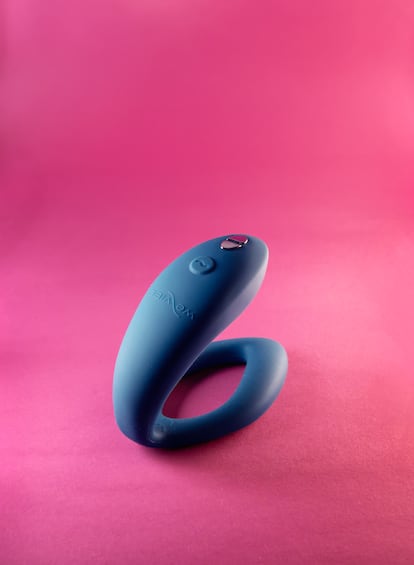
While it’s true that the achievements of second-wave feminism have contributed to the sales of erotic toys, the products have also paved the way towards the normalization of sexuality. Almudena M. Ferrer, a sexologist and educator, sees toys as being more accessible nowadays and forming part of a “conversation that is open to the public and that is connected to pleasure, especially that of women.” During the pandemic, the sex toy industry generated more than $30 billion worldwide, and it is expected to experience a further 8% growth by 2028.
Lovehoney was born in 2021 through the merger of several companies and today it includes the brands Womanizer, We-Vibe, Fifty Shades of Grey, Arcwave and Happy Rabbit. Its repertoire, in addition to the history-making clitoris sucker, includes the first “c” shaped vibrator for couples and the more recent addition of the Womanizer Wave, the first shower head-clitoris stimulator, which Lovehoney came up with after learning that many women’s first sexual experience involved water.
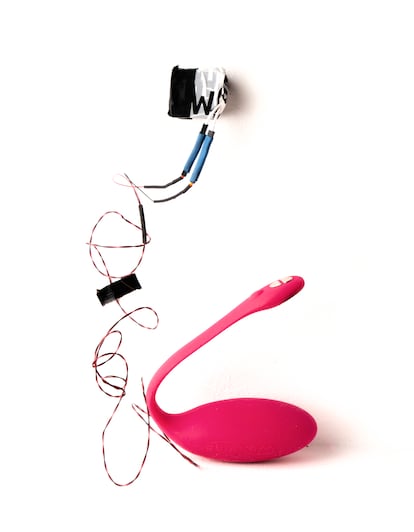
Tobias Zegenhagen, the group’s product director, receives us in a room in which sit two, person-sized, clitoris-shaped plushies. The engineer, who worked for Siemens before coming to Lovehoney in 2017, says he is motivated by “close contact with consumers.”
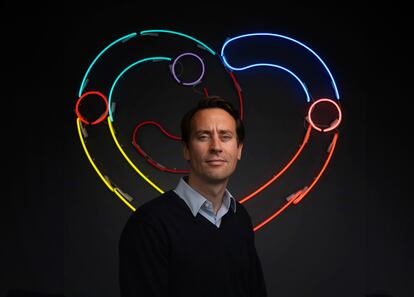
At first glance, Lovehoney doesn’t seem that different from any other electronics company. It has an engineering department that includes electrical technicians, 3D designers, and, of course, engineers, with all the appropriate machinery and testing laboratories. “The really unique thing is that we spend a lot of time with our users. The toys allow for a very individualized experience. There’s no direct correlation where you can say, do this and you’ll have an orgasm. When you make a mobile phone, for example, you give it to a user and observe them. We can’t watch while people masturbate.”
What they can do is ask users questions and build from their answers. For this, they have the MasturbaTEAM, a community of 17,000 verified users of all genders and ages (the oldest is 77) that Lovehoney created in 2019 to professionalize its user feedback loop. “Sometimes we look for people who have never used a toy and other times, we look for people who have a lot of experience. The only criteria are that they are curious and have a certain openness in talking about their sexuality,” says Elisabeth Neumann, sexologist and user research manager. Her team is in charge of interviews, focus groups, and surveys on user experience that extract insights to send to the technological team. A tour of Lovehoney’s engineering department reveals that it is really nothing more than a testing ground in service of the MasturbaTEAM.

“We often got requests to make vibrators as quiet as possible. So, we created the Womanizer Vibe. It still makes some noise because of course, it’s physically impossible for vibration to be absolutely quiet,” says Max Winker, mechanical engineering manager, in explanation of an object we spot in one of the rooms: a soundproof box with a small microphone pointing at a vibrator. Someone mentions that the vibrator looks like a radio host in a recording studio. And do sex toys not provide us with entertaining programming?
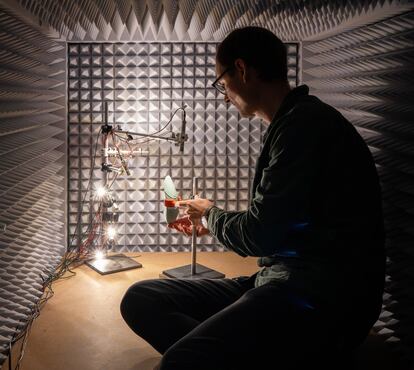
Sometimes, research leads to new toys, as was the case of Arcwave, the first male sucker that was launched in 2020 and stimulates the frenulum using air. The Lovehoney team hit on the concept when women users of the Womanizer commented that they also used it to arouse their male partners.

Project development of this type is not free from challenges. Stigma related to sex toys, which persists despite advancements, pops up in different phases of production. Lovehoney has brought attention to restrictions on websites and social media platforms like Instagram that make it difficult to market its products. Zegenhagen also brings up the roadblocks that the company has encountered when it comes to protecting its patents from potential copycats. “Samsung, which manufactures mobile phones, is treated differently than the Lovehoney group, which manufactures insertable rabbits. It seems like what we do is not innovative, that it’s obvious.”
Stigma even rears its head during the initial phase of product development. Talking about sex isn’t easy, not even as part of a group called MasturbaTEAM. A question that Neumann frequently asks the group’s users is “What do you feel with this stimulation?” Some respond vaguely: “Tingling,” “good,” “bad.” “It’s very difficult for them to accurately describe their experiences because we haven’t learned to do that as a society. We don’t have many specific words to describe sexual experiences and bodily sensations,” says the sexologist.
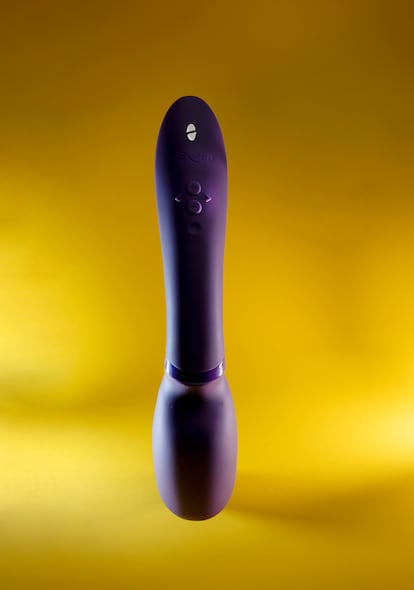
One of the recent findings from the MasturbaTEAM that struck Neumann was the discovery that many women enjoy rubbing their genitals against pillows, tables, and chairs — but that the majority of them thought they were the only ones with the predilection. “I wasn’t shocked by the fact, I was shocked by the shame. There is so much body shaming that a few years of empowering posts on Instagram isn’t enough to overcome it,” she says.
Although progress has been made in the normalization of female sexual desire and masturbation, a 2020 study by the Women’s Institute suggests that “the most common sexual practice among women is vaginal penetration (74.6%), followed by self-stimulation (66.5%),” despite the latter’s proven health benefits. This led Lovehoney to create The Pleasure Fund at the end of 2021, designed to research the benefits of masturbation for women. One of its studies, which was carried out in collaboration with the Charité-Universitätsmedizin Hospital in Berlin, found that breast cancer survivors who took part in the study experienced mental and physical arousal when they used a sex toy.
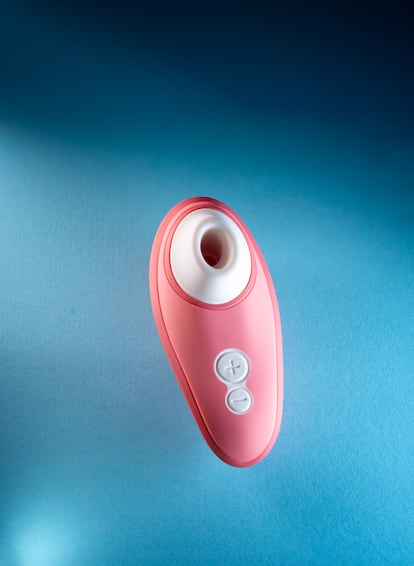
Ferrer, who leads masturbation workshops in Spain based on the Dodson method, says that toys help women to connect with their body. Many of her patients, for example, have trouble locating their clitoris. “Connecting with your genital map, whether it takes place through the use of toys, hands, or other objects, is wonderful,” she says.
So then, are hands enough? “Man, what happens is that you get to a point where you’re tired,” laughs Ferrer. Toys, adds Neumman, “broaden your horizon if your sexuality feels a bit stuck or if you want to add another layer. More than anything else, they start a conversation about self-pleasure — but they don’t define your sexuality.”
Sign up for our weekly newsletter to get more English-language news coverage from EL PAÍS USA Edition
Tu suscripción se está usando en otro dispositivo
¿Quieres añadir otro usuario a tu suscripción?
Si continúas leyendo en este dispositivo, no se podrá leer en el otro.
FlechaTu suscripción se está usando en otro dispositivo y solo puedes acceder a EL PAÍS desde un dispositivo a la vez.
Si quieres compartir tu cuenta, cambia tu suscripción a la modalidad Premium, así podrás añadir otro usuario. Cada uno accederá con su propia cuenta de email, lo que os permitirá personalizar vuestra experiencia en EL PAÍS.
¿Tienes una suscripción de empresa? Accede aquí para contratar más cuentas.
En el caso de no saber quién está usando tu cuenta, te recomendamos cambiar tu contraseña aquí.
Si decides continuar compartiendo tu cuenta, este mensaje se mostrará en tu dispositivo y en el de la otra persona que está usando tu cuenta de forma indefinida, afectando a tu experiencia de lectura. Puedes consultar aquí los términos y condiciones de la suscripción digital.
More information
Archived In
Últimas noticias
Chris Martin, Taylor Swift, Elijah Wood and other famous wedding ‘crashers’
‘How does it feel to be a failure?’: Elizabeth Berkley’s journey from ‘Showgirls’ ridicule to vindication
The story of the Málaga virus: The code that haunted Google’s cybersecurity center director for 30 years
The impact of Ecuador’s mega-prison: A polluted river, cleared forests and military checkpoints
Most viewed
- Christian Louboutin: ‘Young people don’t want to be like their parents. And if their parents wear sneakers, they’re going to look for something else’
- The low-cost creative revolution: How technology is making art accessible to everyone
- Liset Menéndez de la Prida, neuroscientist: ‘It’s not normal to constantly seek pleasure; it’s important to be bored, to be calm’
- All the effects of gentrification in one corner of Mexico’s Colonia Roma
- December Social Security and SSI payments: Dates, double checks and the 2026 COLA increase










































